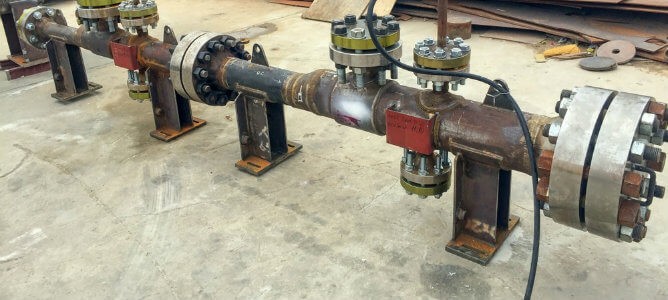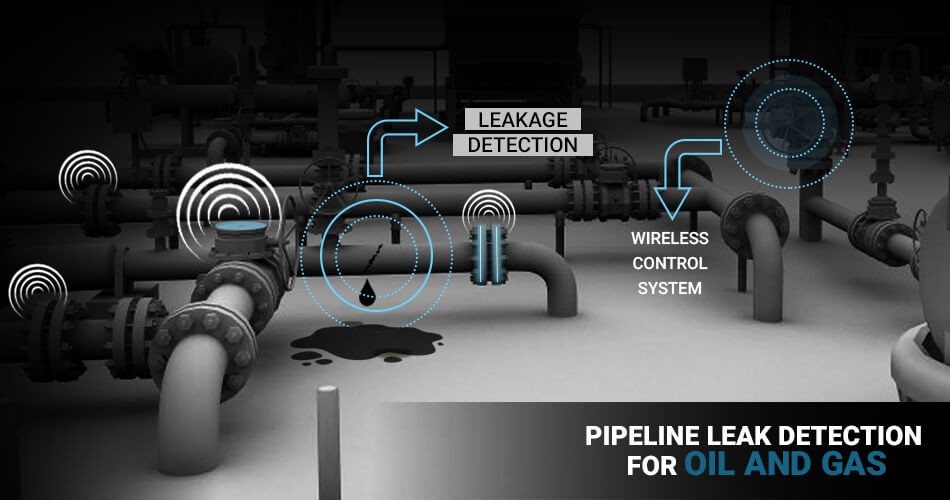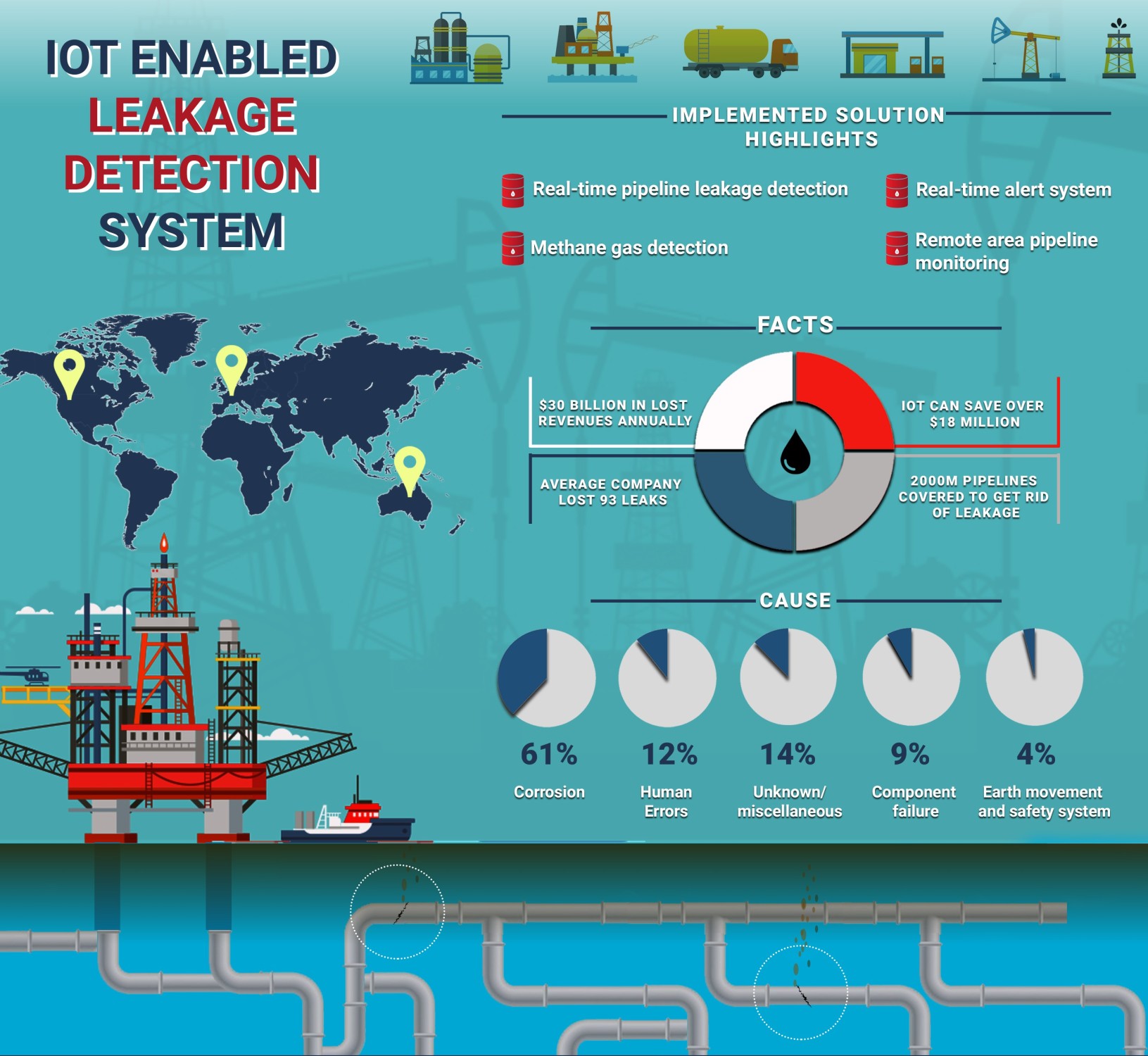
Importance of Leak Testing in Oil & Gas Industry
Importance of Leak Testing in Oil and Gas Industries
Abstract
A brief overview on the importance of leak testing in the oil and natural gas exploration and production industry will be presented in this whitepaper. How our climate and health are affected by it. What are the key factors that influence testing for leaks? How we should assess the methods of Leak testing.
Problem Statement
The biggest issue with leak testing is assessing the exact position of the leak and the extent of the leak. A standard expectation of a leak detection device is to detect a leak of 1% of the usual flow rate and to locate it within one hundred meters. In approximately 1 per cent of the current flow rate, the leakage increases the pressure drop in the pipeline by anything between 0 and 2 per cent depending on the position of the leak and produces a flow imbalance of approximately 1 per cent of the flow rate.
Health risks from leakage of gas

There is no Colour or odor of natural gas, making leakage difficult to detect. When inhaled, the effects of exposure include headache, nausea, dizziness, exhaustion and breathing difficulties. On average, in the United States, 17 individuals die each year due to gas leaks.
Gas Leaks Environmental Risks
Methane leaks can destroy vegetation and release harmful greenhouse gases. In trapping heat over a 100-year cycle, methane is 34 times more efficient than carbon dioxide. Even a small gas leak will eventually accumulate an explosive concentration of gas. Drilling and extracting natural gas from wells and transporting it via pipelines can result in leakage.
Background
Leak testing is a product quality control process that detects manufacturing anomalies by testing a generated component or device leaks for porosity. A leak test is used to determine whether, within a defined leak limit, an entity, product, or device works.

A leak occurs when, through an imperfection or production defect such as a hole, crack or weak seal, a gas or liquid flows through an object. Within a substance, these imperfections produce high and low pressure areas, causing the gas or liquid to flow from the high-pressure region to the low-pressure area.
For example, pressurized air to detect leaks, although there are different methods for leak testing. Many original equipment manufacturers require components to be leak-tested before installation. During various stages of assembly, the OEM could also conduct a leak test on the entire device. A leak test could be used to bench test prototypes at different times.
Leak testing verifies that a manufactured product complies with predetermined requirements. It can help minimize product warranty claims and quality costs for manufacturers of systems.
There are also many production efficiency advantages to an optimal leak testing process, such as validating the quality of supplier components and ensuring that system components are properly installed by operators, which allows the manufacturer to increase production efficiency and reduce rework and product scrap waste.

Gas Leak: Natural gas is a fossil fuel located below the surface of the Earth and has many uses. It is widely used to generate electricity and fuel for automobiles. The safest and most economical means of transporting natural gases and energy sources is gas and oil pipelines. There will be no leaks if these pipelines are properly maintained, but leaks can result from factors such as corrosion and accidents.
Solution to avoid leaks
If a leak is missed in the production process early on, it may later cause severe headaches. Imagine you are assembling a sixteen-liter engine, it's all going well, but then the final leak test fails because the gasket on the head was not properly seated. The amount of wasted time that goes into quarantining the engine, finding the source of the leak, disassembling the machine, and fixing it is immense. It is largely avoidable as well.
If a leak testing procedure is reliable, manufacturers will be able to use leak checks to conduct assembly or part failure root cause analysis, which will dramatically enhance the production processes as a whole and decrease the number of failed tests down the road.
The main objective of leak testing is to strengthen seals, to identify a pressure component's weak spot, to establish min and max burst pressure, to define product specifications.

Ref: https://www.biz4intellia.com/blog/pipeline-leak-detection-with-iot-in-oil-and-gas/
Leak checks are also conducted before the delivery process. With recorder systems or computer operated systems, the pressure drop can be registered. There are also forms of leak tests that do not lead to sections that are out of use.
Pressurization with gas is another form of leak testing. Gas leakage can be detected with a gas detector sensor or by submerging the pressurized object in water to search for bubbles.
What methodology we should use for leak testing depends on these points:
- What is the part size and what is its inner volume?
- What is the limit on leaks?
- Does it have secret internal volumes that can influence measurements of leaks?
- Are the components clean and dry?
- Is there access to within or is it a locked unit?
- Are they rigid or flexible?
- Are components at ambient temperatures?
- What is the surface finish of all surfaces used for sealing?
Methods of Leak Testing
Encoding Enhancers uses Leak Testing Mechanisms like : We are using the leak test, in which we use the current and voltage drop to locate the Leak. The position of the leak is determined from the resistance drop across the Leak.
There are several different types of methods for leak checks, which have different limits of detectable leak rate. The pressure decay leak test method will primarily be discussed in this article. If a component is leaking or not within a predetermined leak rate limit, a pressure decay test decides.

Ref: https://www.biz4intellia.com/blog/pipeline-leak-detection-with-iot-in-oil-and-gas/
The advantages of pressure decay leak testing are economical, quick (depending on the part's internal test volume), simple to set up, compressed clean dry air only needed, quantitative, non-destructive, no pre- or post-processing required.
Typical industries include automotive, sealed electronics, medical equipment, packaging, consumer products for pressure decay leak test methods.
Detection of gas/oil leakage in transmission pipelines is of critical importance for safe service. Delayed detection could put human life, property, and the environment at risk.
Early identification of major environmental gas leakage
Natural gas can leak into the air, known as fatigue cracking, causing various health issues and environmental harm. Pipeline networks cover a wide area, making gas leakage difficult to maintain and track.
Gas leaks are a constant problem, but mapping is one way to track them. Maps indicate the location of leaks and repairs and are periodically updated. Immediate steps must be taken to avoid further accumulation of toxic gases in the air when a new leak is detected.
Detecting gas leaks early can help avoid the harmful effects of methane on both human health and the environment.
Conclusion
This whitepaper includes a reference to the importance of leak testing for oil and gas leaks to direct readers. This paper offers brief details on the issues without leak testing and also addresses leak testing and gas leakage. It also offers brief details on the techniques of leak testing and what are the key factors after we settle on the techniques of leak testing.
References
- Leak Detection Methods and Defining the Sizes of Leaks - 4th International Conference of Slovenian Society for Nondestructive Testing - Ljubljana, Slovenia.
- www.resato.com/en/pressure-testing/oil-gas/hydrostatic-pneumatic-tests/leak-test
- www.tqc.co.uk/our-services
- https://www.azocleantech.com/article.aspx?ArticleID=921